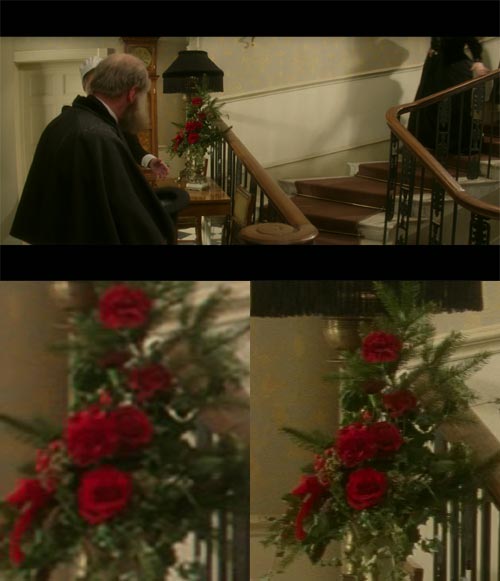 Picture:
Picture:  Sound:
Sound:  Extras:
Extras: 
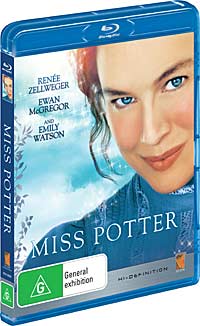
Movie:  Picture:
Picture:  Sound:
Sound:  Extras:
Extras: 
So when I was putting the Blu-ray version of Miss Potter, a charming little biopic about the Peter Rabbit author, into my disc database, I was startled to note that the run time was 89 minutes, rather than the 92 written on the sleeve, which was also the theatrical run time. After investigating, it turned out that this movie is encoded at 1080i50. Apparently 1080p25 is not specified under the Blu-ray standards. Despite a number of requests Icon have been unable to tell me why they chose a 50 hertz format. (Since first published, I have discussed this with Icon's technical manager, and he advised that they were constrained, essentially, by the digital sources made available to them. They could have held out longer, but then the movies wouldn't have been available in HD until much later).
The movie is just a trifle soft in various parts, but can look very good if deinterlaced properly. Unfortunately, most current generation Blu-ray players do not do a good job of deinterlacing 1080i50, so you may experience at various points instability in fine geometrical detail, and character breakup in the end credits.
 (Australian rating); Region Free; Movie in 1080i50 format may not work on some US players
(Australian rating); Region Free; Movie in 1080i50 format may not work on some US players
The following video bitrate graph was generated by BDInfo 0.5.3:
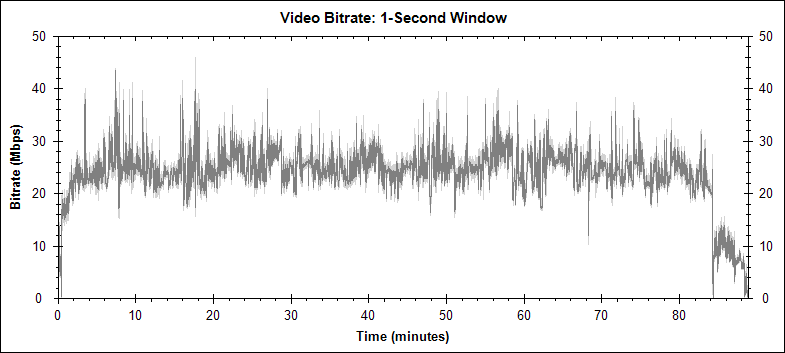
This comparison presented some interesting challenges because the two disc formats were presented in different aspect ratios. The DVD was in 1.78:1 while the Blu-ray was in 2.35:1. Apparently the latter was the aspect for theatrical presentation, so it must have been cropped for DVD. Or, rather, some kind of pan and scan to widescreen must have been performed. Indeed, from my comparison it seems likely that the same picture height was preserved for the DVD presentation, and the left and right edges of the picture were cropped. Here are the two versions of the same frame, DVD top:
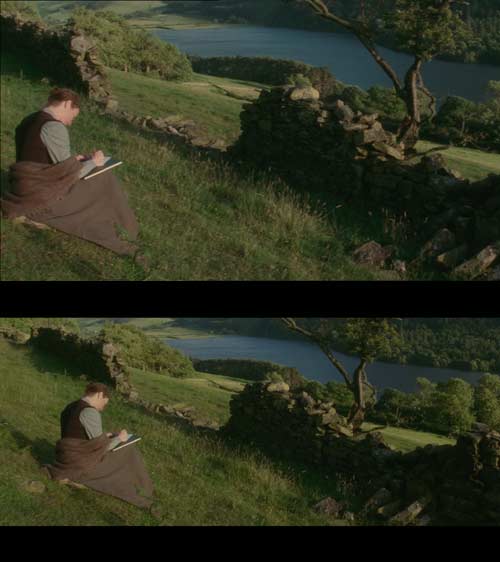
The general theme I'm trying to preserve here is comparing what you will see on a particular high definition display when comparing one with the other. That means that the DVD will be scaled up to fit. In this case, it inevitably means that the size of in-movie items will therefore appear markedly bigger in the DVD version, but that is a cost I think I must pay for proper comparability.
So, at the top of each is the full frame (suitably shrunk down) used in the comparison, with a 250 pixel wide detail from the frame underneath. The left side is from the PAL DVD. The image was captured digitally from the disc, scaled up from its native 720 by 576 resolution to 1024 by 576 (to present in the correct aspect ratio). I then scaled it, in order for it to be comparable to the Blu-ray version, to 1,920 pixels wide.
The detail is from that last scaled version, and has not been rescaled again. The right side is from the Australian Blu-ray. This has not been scaled at all. Different applications were used to capture the two frames, so I am not comfortable comparing the colour between the two, merely the detail and sharpness. For visitors from NTSC lands, generally the PAL DVD is just a touch sharper than the NTSC DVD.
So even though the final size of photographed objects is smaller in the Blu-ray version, they are still presented with a great deal more detail. In the following shot we can see Miss Potter's facial features on Blu-ray, but not on DVD, that she is holding a book in her left hand on Blu-ray, but not on DVD, the individual grass heads at her feet on Blu-ray, but not on DVD, the ripples on the water on Blu-ray, but not on DVD:
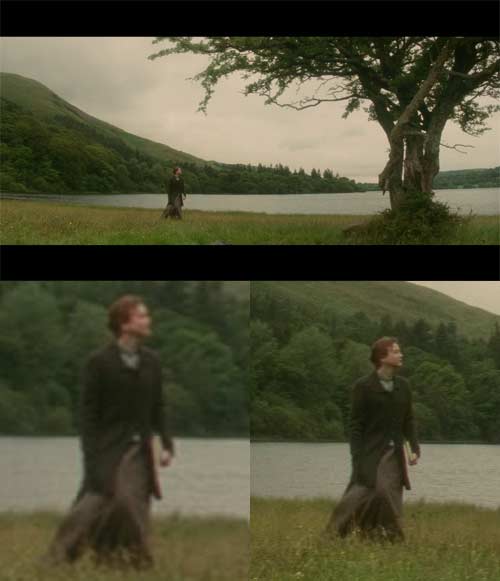
The same theme continues here. On Blu-ray there are hairs in the eyebrow, and sagging skin under the eyes, and properly defined and detailed wrinkles, which can only be guessed at in the DVD:
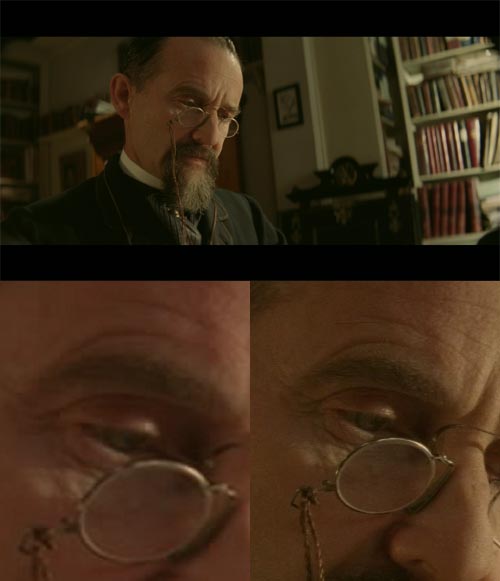
I had to get this one in. The stitching and cloth on the Blu-ray version look, well, real. The DVD? Well ...
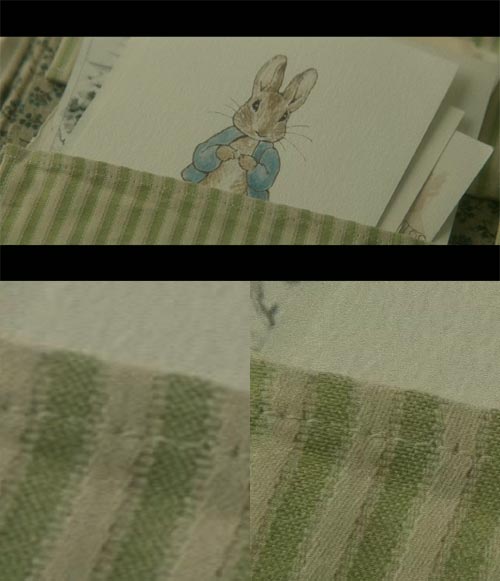
And a last one, full of roses, just to finish off:
